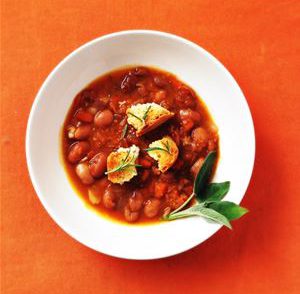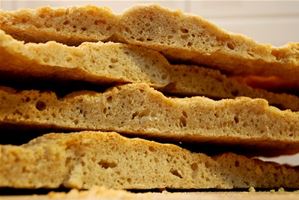Employed by the Egyptians for the first time more than
3,000 years ago; employed by Reuters International news agencies until the fax
machine put the last 45 out of work; retired out of India’s Police Service in
Orissa as recently as 2002; currently banned from work in Afghanistan by the
Taliban: the pigeon has had a long career as a messenger.
But pigeons have always been an important food source, too. Especially
in Tuscany, where your carrier pigeon might arrive carrying a recipe attached
to one leg, you’ll have to shoot the messenger before you can proceed.
English-speakers might kill two birds with one stone, but Italians take two
pigeons with one fava bean, put it all in a pot and turn it into a culinary
heaven.
When I managed a restaurant in Gaeta, in Italy’s central south, at this
time of year the sous-chef would arrive through the back door of the kitchen
with a bag-full of various wild birds and proceed to cook them for me with
fresh tomato, chilli and loads of garlic. They were so tiny that it was
impossible to use a knife and fork; the only way to eat them was to pick them
up with my fingers and suck the tasty meat off the delicate bones. We would
toast bread, drenching it with extra-virgin olive oil and sprinkling it with
sea salt before dipping it into the dish to soak up the luscious sauces.
Tuscans do the same with larger, meatier birds such as pigeons.
Let me be clear: the pigeon on your plate is not the same pest you see
in piazzas.
Although many Tuscans raise their own pigeons for food, if you can’t
take two pigeons with one fava, go pick them up (or order them) at your local macelleria or mercato.
If I find myself craving pigeon but don’t want to cook, I head to
Osteria a Passignano (off the Firenze-Siena superstrada, exit Tavernelle;
tel.055/8071278). The first main dish on chef Matia’s seasonally changing menu
is invariably pigeon, and he changes the dish to follow the best the seasons
have to offer, adding his own, special twist. Invariably, the pigeon dish is
one of the specialties of every season.
Intrigued? Come to Venice in the beginning of June, where I will be
orchestrating various culinary events (www.labiennale.org). In
midsummer, go to the annual Sagra del Piccione (pigeon festival) in the village
of Montecchio, 6 km from Cortona, in the same province
(www.comune.cortona.ar.it). The Sagra del Piccione offers traditional pigeon
dishes and other local specialities, including live music, games and shows.
My message carried by Tuscan pigeons is a recipe.
Buon appetito!
RECIPE
Slow-cooked pigeon
braised with chilli, tomato and Chianti Classico
Ingredients
2 pigeons
2 Tuscan red
onions
100 g smoked pancetta
4 bay leaves
1 spring of
rosemary
1 small bulb
spring garlic
1 bottle of
young, fruit-driven Chianti Classico
Fresh chilli
1 ripe tomato
Method
Wash the birds under cold running
water and pat dry. Cut off the legs above the thigh; then cut the breast meat
off the rib cage in two separate pieces (so you end up with four pieces per
pigeon). Discard the remaining bones of the ribcage.
Peel the red onions, cut in half
and slice into thick strips that will turn into ribbons once you sauté in extra
virgin olive oil. Once they are softened to pink ribbons add the pancetta and cook until transparent, throwing in the bay leaves, rosemary and
the freshly sliced chilli to sauté and flavour the oil released from the pancetta.
Remove everything from the pan
and set aside, leaving the oil released from the pancetta. Reheat the pan until the oil ripples, place the well-dried pigeon
pieces skin-side down to brown, turning on all sides. Once all the pieces are
browned, add the roughly chopped cloves of spring garlic, sea salt and chilli.
The already sautéed onions and smoked pancetta can go back into the pot, along
with the bay leaves and rosemary and the ripe tomato cut into quarters. Cover
with two glasses of the Chianti Classico (the rest is to drink!), add a small
amount of water, cover with a lid and let simmer very gently until all the
pigeon pieces are tender. Abbia pazienza. You cannot be in a hurry with pigeon because if the heat is too high,
you are likely to end up with very dry pigeon breast and extremely rubbery
pigeon legs.
Remove the pigeon meat and place
on a serving tray in a warm place to let rest, meanwhile putting the pot back
on the heat to reduce the cooking liquid. Discard the bay leaves and the
rosemary, adjust the seasoning and pour the sauce over the pigeon to serve with
oil-drizzled and sea-salted toasted bread.







